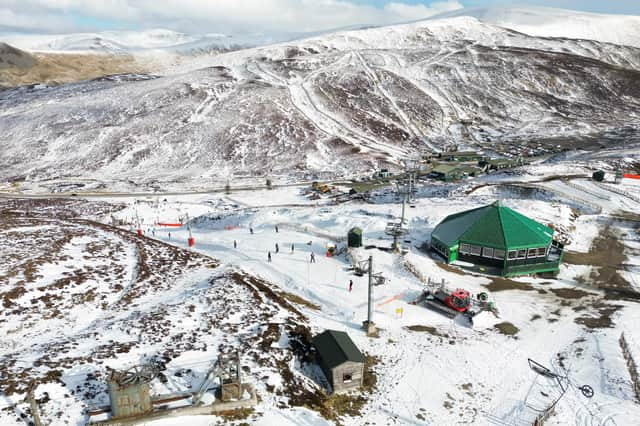Is Glenshee really the best Scottish ski resort?


It’s official: Glenshee is the best ski resort in the UK – at least, it is according to a new study conducted by Blacks Outdoors. Joint second were The Lecht and Glencoe, with Cairngorm fourth and Nevis Range fifth. The other five resorts in the study were the Snow Centre in Hemel Hempstead, Gloucester Ski & Snowboard Centre, Suffolk Ski Centre, Weardale Ski Club and Midlothian Ski Centre.
There are all kinds of problems with this list – and with the current craze for ranking things more generally – and we’ll get into all that in a moment. First though, a little more on the methodology employed by Blacks, so it’s clear how they got their results.
Advertisement
Hide AdAdvertisement
Hide AdThe study took into consideration four factors: the total length of slopes available at each resort, the number of ski lifts, the cost of an adult day pass and the availability of equipment hire. A per cent rank scoring system was then used to give each resort a score out of 10 for each factor. Glenshee, for example, achieved an overall “ski resort score” of 9.61 out of ten. This was calculated by taking the resort’s scores in each area, adding them together and dividing by four. Glenshee ranked first out of ten for total length of slopes, number of ski lifts and availability of equipment hire, scoring ten in each case, and it scored of 8.42 for cost of a day pass (coming second out of ten after Suffolk Ski Centre, but with various other resorts tied for lower placings) – so 10 + 10 + 10 + 8.42 = 38.42 / 4 = 9.61.
At this point, Glenshee regulars may be wondering why the resort has failed to mention this “best ski resort in the UK” accolade on any of its social media channels (at time of writing, anyway). It’s just about conceivable that they aren’t aware of their win, but a more likely scenario is that they found out about it, had a quick look at the methodology and decided to ignore the whole thing on the grounds that it’s close to meaningless. For a start, using only four factors to assess something as complicated as a ski resort is a bit of an issue, and there are some very glaring omissions. Given that snow is a key ingredient for skiers and snowboarders, you’d think something like “average number of skiable days per season” might have been a good thing to include. After all, it’s not much good having longer pistes than anyone else if there’s no snow on them. Two more big misses: availability of accommodation and food & drink. For families in particular, the ability to feed tired, hungry kids on the mountain can make or break a ski trip, as can the distance you have to schlep to wherever you’re staying.
To be fair, these factors might have been left out on the grounds that they would have skewed things too far in favour of the Snow Centre – an indoor, year-round skiing facility with artificial snow and the whole of Greater London to go at in terms of food and accommodation. But that just highlights the fact that the study isn’t really comparing like with like: it’s wonderful that the Snow Centre has snow all year round, but I’d imagine you could only complete so many laps of its 160m-long slope before longing for something a little more expansive. Even if it had somehow finished top of the Blacks rankings, I can’t imagine a universe in which I’d want to book myself in for a week’s skiing there. (I’m sure Hemel Hempstead is a lovely place to visit in February, but I’m not convinced they have scenery to match the grandeur of, say, Glencoe.)
I could go on, but you get the general idea: it’s a flawed study, and it would be unwise to let its findings influence your snow-sliding future. What’s perhaps more interesting than what’s wrong with the study, though, is the way it reflects the current craze to rank just about everything. The internet is now awash with top fives and top tens, but – no matter how carefully these have been arrived at – there’s evidence to suggest that ranking things is not a helpful or particularly healthy way of looking at the world. As Jinseok Chun and Richard Larrick point out in a 2021 article in the Journal of Personality and Social Psychology, “because they invest a disproportionate amount of attention to the top ranked option when they are given rank information, decision makers tend to learn the strengths of the top ranked option, but they fail to process the strengths of the other options.” Top ten lists kill nuance, in other words: they encourage us to focus on a single “winner” and ignore the rest.
A more sensible way to look at Scotland’s ski resorts is to take the horses for courses approach. Looking for a benign environment in which to teach your kids to ski? Then the Lecht, with its plentiful and easily accessible bunny slopes, is your friend. Want to convince your cliff-huckin’ Canadian cousins that Scotland has serious lift-accessed terrain? Take them to the Back Corries at Nevis Range. The different resorts all do different things well – the trick is figuring out what you want and then finding the resort to match.
